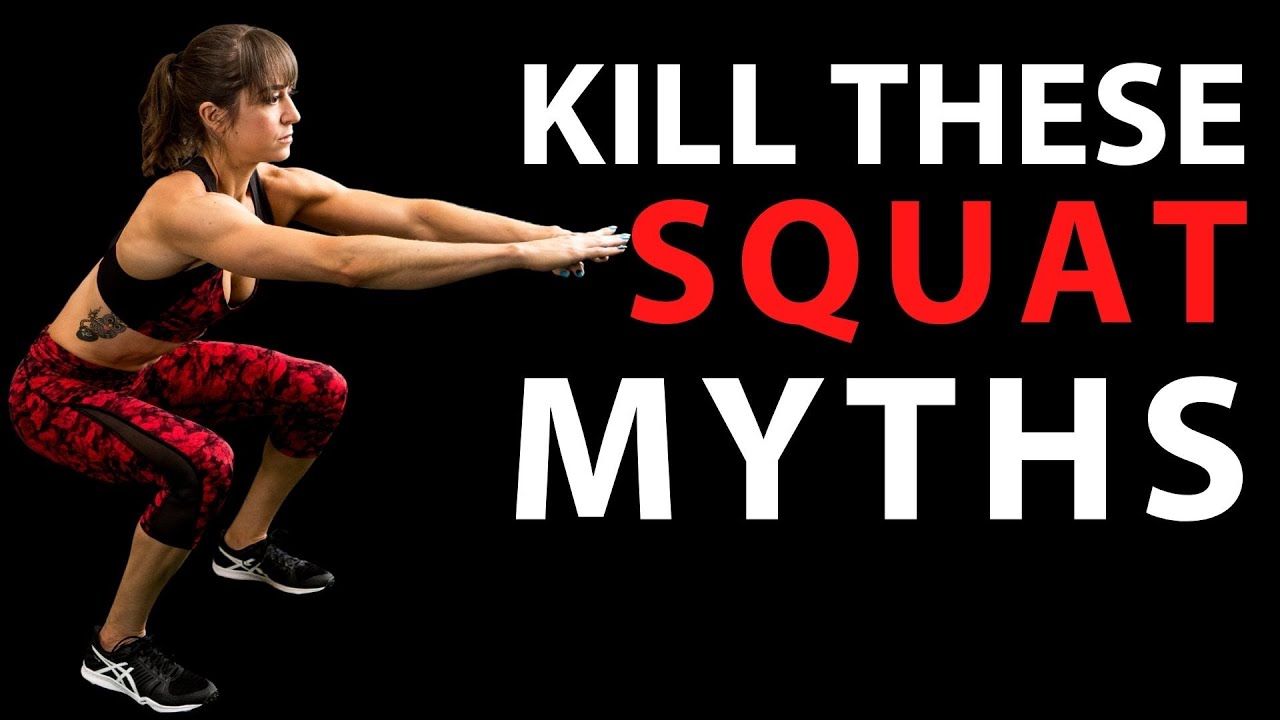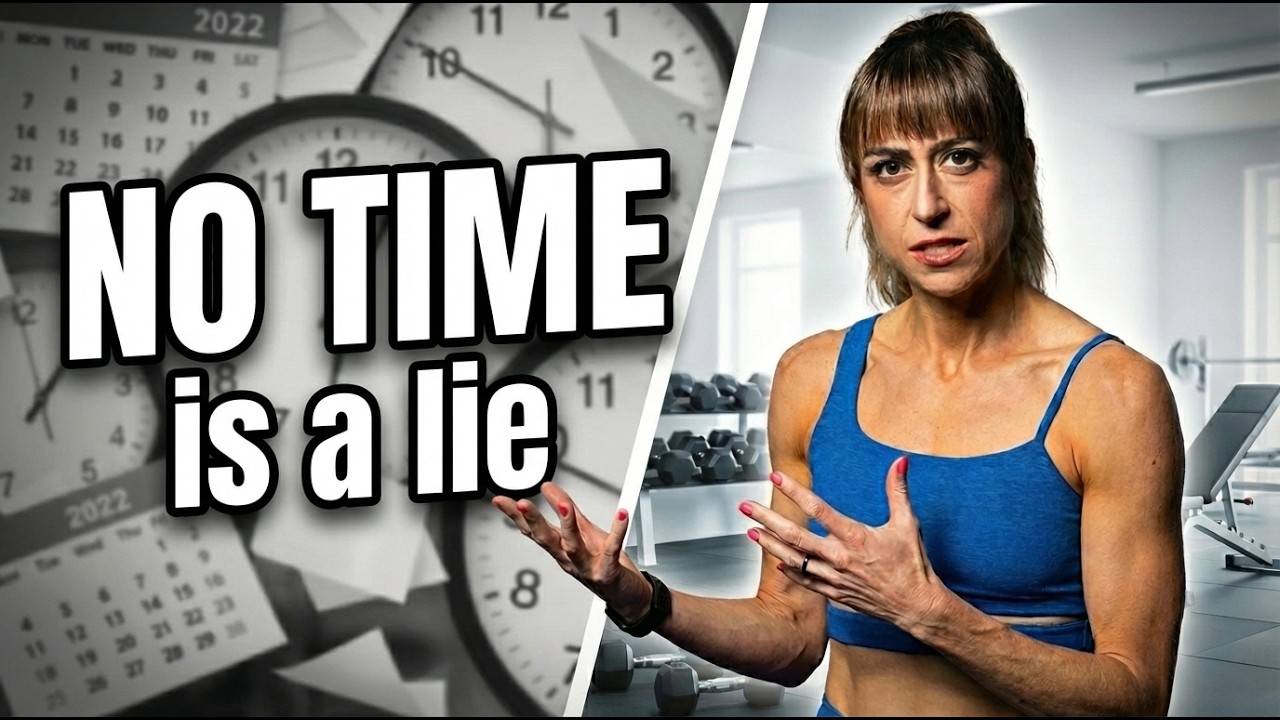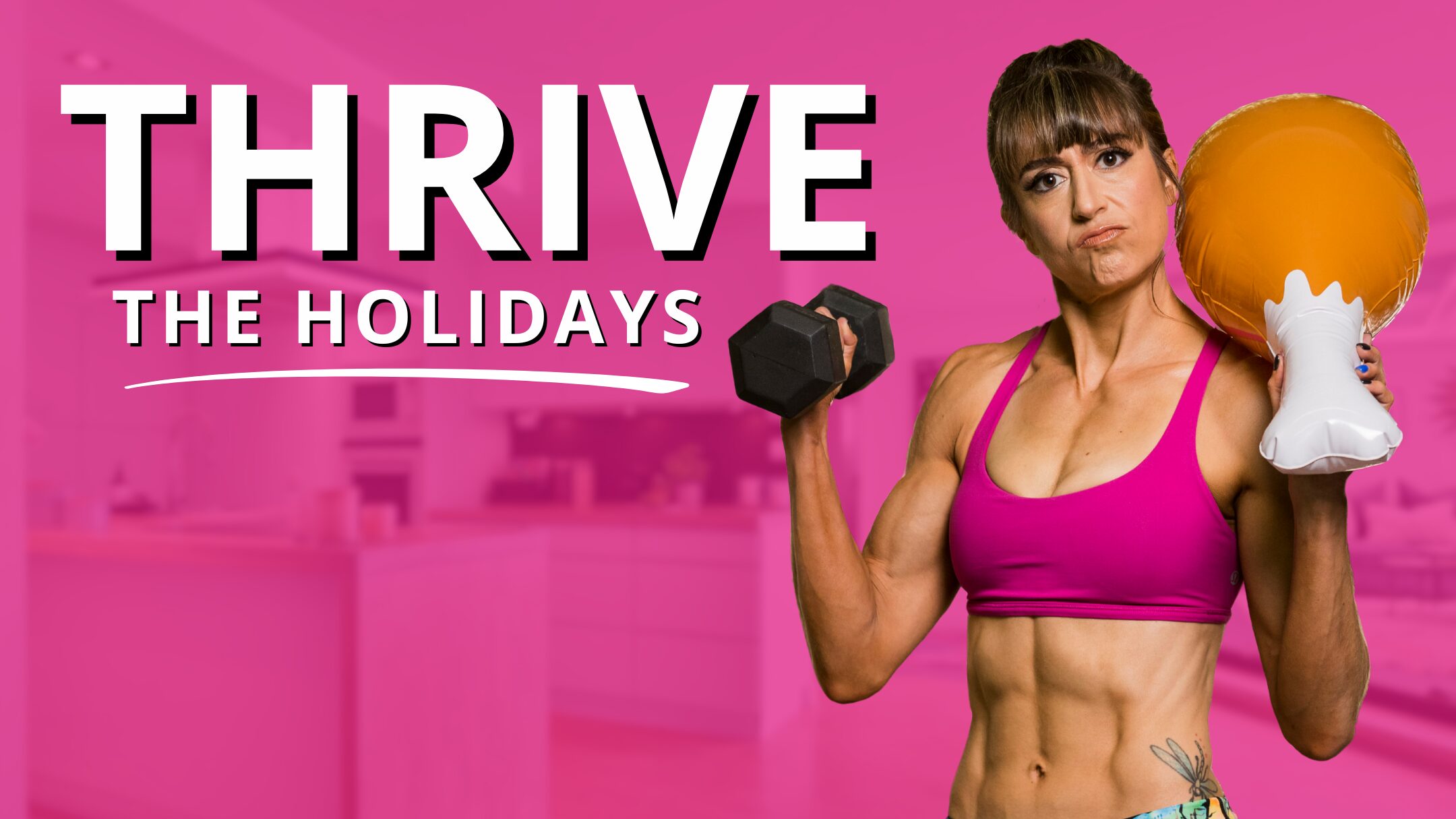What does it mean to have picture perfect squat form?
And is there really truly such a thing?
Or are we actually doing MORE damage by trying to force one version of proper form on every single person no matter their build, training experience or previous injury history?
Because I believe there SHOULD be variation to movement patterns, and even an emphasis placed on recruitment patterns, or the muscles that actually SHOULD be working, over just mimicking a proper movement, I want to discuss 3 squat myths, how they came to be and why they actually hold us back from getting the most out of this amazing compound move – the Squat.
But first, I want to discuss why we can’t force one version of form, or even simply one variation of the squat on every single person.
While I do believe we should have standards of form and seek to work on proper movement patterns, I think we also have to recognize that we will not all move the same.
We can’t see form as black and white, simply good or bad.
We have different builds, different postural distortions and even different goals. And this means that not everyone will squat with the same stance or even benefit from the exact same squat variation.
And sometimes forcing someone to fit a form mold you feel is correct can lead to overload and injury as their body compensates to mimic the movement you’re telling them to do.
Our bodies will seek out mobility from joints or areas not meant to provide it or even overuse smaller muscles in an attempt to replicate a movement.
So while you may love the barbell back squat, a client may not be ready for that movement or ever even need to do it. Instead a single leg squat to box or goblet squat may be right for them.
They may have more forward lean or even a wider squat stance.
They may need a mini band for that tactile cue to help them activate their glutes. Or due to limited ankle mobility, they may need to squat to a box to start to help them better load their glutes without their lower back engaging.
We need to see opportunities in slight variations of movements over ranking them as better or worse, good or bad.
3 Squat Myths That Need To…Die…
Sometimes simply using the same but different because of how it affects muscle activation may be key to our own progression!
So what are the 3 Squat Myths that may be holding you back?
Myth #1: Your knees can’t go past your toes.
Knee pain is an all too common complaint. And tight hips and limited ankle mobility are common mobility restrictions due to our modern lifestyle.
These things combined are part of the reason we saw the rise of the cue “Your knees shouldn’t go past your toes.”
This cue was meant to help remind people to actually sit back over first bending their knees forward while letting their heels rise up.
It’s intentions were good.
However, it’s perpetuated the belief that squats are bad for your knees or that your knees can’t travel forward and instead need to stay over your ankles.
But to achieve a deep squat or a full pistol squat?
This just isn’t possible.
Your knees can and, often even SHOULD, travel past your toe with no negative consequences.
The key is making sure you’re properly loading those glutes and sitting back.
You need to make sure you have the proper hip and ankle mobility to be squatting as low as you are while keeping your heels down.
If you can’t load your glutes and keep your heels down, you may then have issues with your knees traveling forward as the muscles around your knees become overloaded.
So while this cue was well intentioned due to mobility restrictions and injuries that were popping up, you simply may not be able to work through a full range of motion with proper form if you try to force your knees to stay behind your toes!
The key is working on your ankle and hip mobility so you can properly load while potentially even using a squat to box variation to help you control the movement and properly load.
Myth #2: You need to stay super upright.
A nice upright squat position looks beautiful. Unfortunately though many of us simply don’t have the build to do it and trying to prevent ourselves from leaning forward will result in lower back aches and pains.
While we want to work on core stability and hip and thoracic mobility as much as possible to improve our squat posture, we also do not want to force someone to keep their chest upright if their mobility and build don’t allow for it to be done with proper recruitment patterns.
Too often we try to force a proper looking movement at the expense of actually utilizing the correct muscles.
And while this cue came about to help people avoid turning the squat into a hip hinge, it can backfire if we try to force a position we can’t control.
We have to face the facts that some of us just aren’t built for picture perfect Instagram worthy squats and work to maximize our squatting form based on our builds.
Now this doesn’t mean you shouldn’t work on your mobility to get more upright, but it does mean you need to recognize there will be acceptable variations in the squat and that your squat movement pattern may involve more forward lean.
It’s why coaching people, you may want to avoid having them face a wall to cue “chest up.”
Especially if you have long femurs and a short torso, you may find that a slight lean forward as you squat allows you to get lower, load your legs better AND even avoid lower back aches and pains instead of trying to arch to stay upright.
You may also use box squats or front loaded squat variations to help you properly sit back and even brace your core to ultimately keep a more upright body position.
It’s key though that you don’t force an upright posture at the expense of arching your lower back and causing aches and pains there.
Myth #3: Your squat needs to be (insert depth here).
I’ve heard everything from “Don’t squat below parallel or your knees will explode” to “You need to squat ass to grass or it doesn’t count.”
The real answer to the proper squat depth question?
Is…it DEPENDS!
The difference of opinion on squat depth and cueing came about because one side feared the knee pain they often saw clients suffering from with squatting while the other wanted to help people strengthen through a full range of motion for better muscle gains AND to even maintain better mobility as they aged.
But we have to recognize that not everyone will be able to squat to the same depth.
Your structure, injury history and mobility may lead to you limiting your squat depth and even controlling it through use of a box or bench. Or it may allow you to squat into a nice deep squat very comfortably.
But whatever range of motion you can control, you want to work through it as fully as possible. Our goal is always to train through the largest range of motion we can properly control.
Which for some may be that full deep squat while for others it may be to parallel.
But we need to stop demonizing one or the other. And we even need to recognize that BOTH can be useful at points even.
Even someone who can easily perform a deep squat may limit squat range of motion strategically to work on weak points or stick points.
Form isn’t black and white.
But we need to realize when cues may be misused and perpetuate improper recruitment patterns or lead to everyone trying to force the same mold.
One size doesn’t fit all.
There is no one best move or movement variation.
Use these tips to help dial in your squat form to work with your build, needs and goals!
Ready to move and feel your best with workouts tailored to your needs and goals? Check out my 1:1 Coaching!
–> Apply Now



Cori,
Happy Easter & thank you! For the Squat Myths, all of your great instruction and exercise motivation.
Went through your coach interview & fully appreciate the approach to selection (of each other too!)
Will be back as I get my act in gear again.
Appreciatively,
Alan
Excited to help when you’re ready!
I absolutely love your instructions and knowledge! Thank you so much for everything you do! Soon to purchase a book or program from you!!
I am curious what you think in regards to a “butt wink” when squatting too low. Does it matter and, if so, how much? I was told to only go to a 90 degree angle when squatting or I encounter the this issue but feel I get better results when I squat a bit lower. What do you think in regards to the depth and butt winks?
The butt wink “matters” in that it can show you limitations in mobility or structure. If you have pain, you want to work on mobility and/or limit ROM based on structure. But if there is no pain, you want to still do what you can to address it but also know you don’t have to demonize that movement pattern. There actually are no studies directly linking that as a movement distortion that causes injury.
Naïve questions: What denotes a short femur?
Also, how high should the bench or box be if a beginner and working on mind/body connection?
Last question, I promise. How do you know if you do need to lean forward more or not, while doing a squat? Lower back discomfort?
Thanks Cori!
Team 1%
Talked to Lynne so I know she covered this with you 🙂 But femur length is in proportion to torso length that it is short or long in this case. And height of box is based on what you need. Also you can not only purposefully vary your lean BUT you do want to avoid trying to force a position that leads to overload.